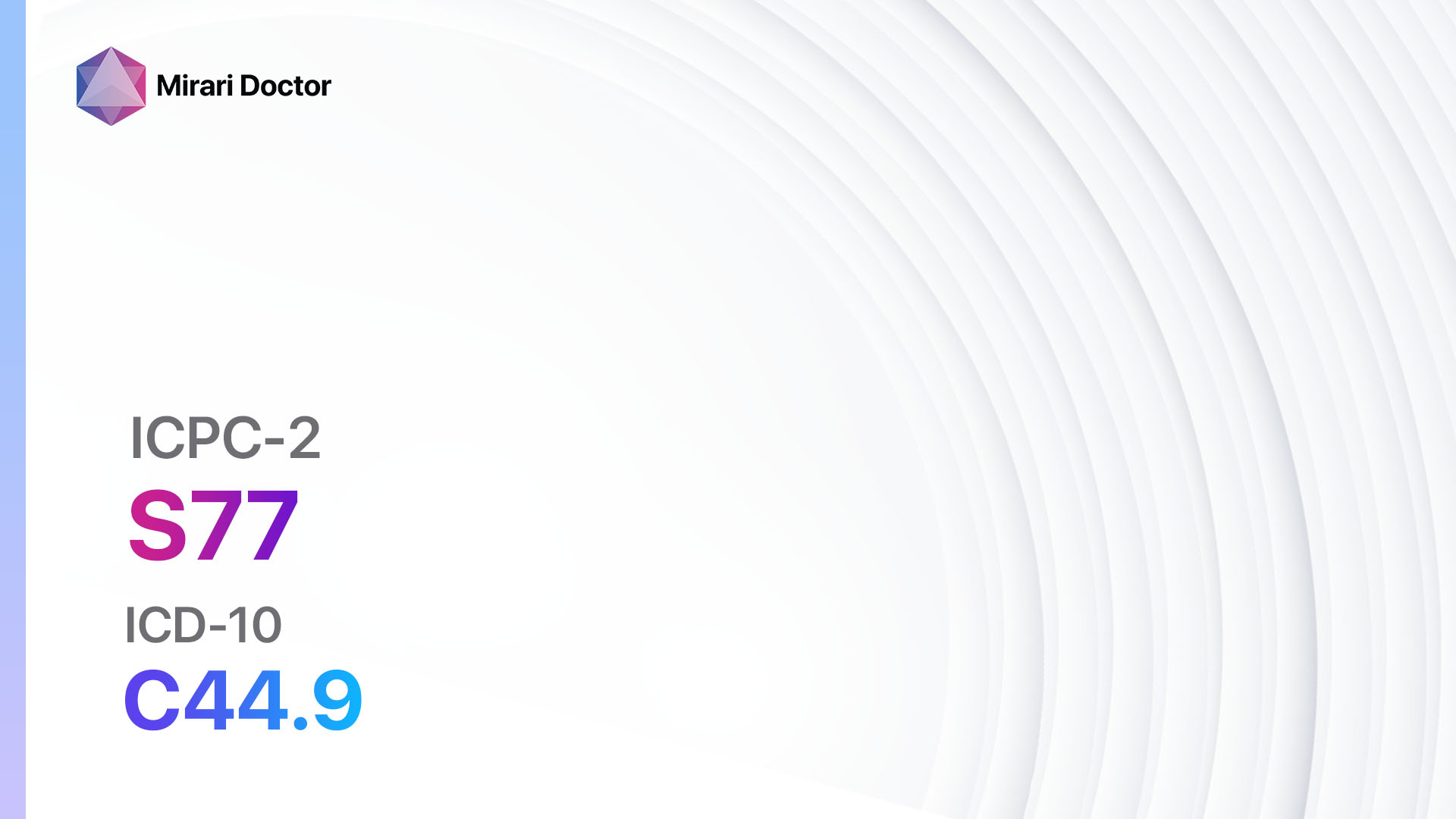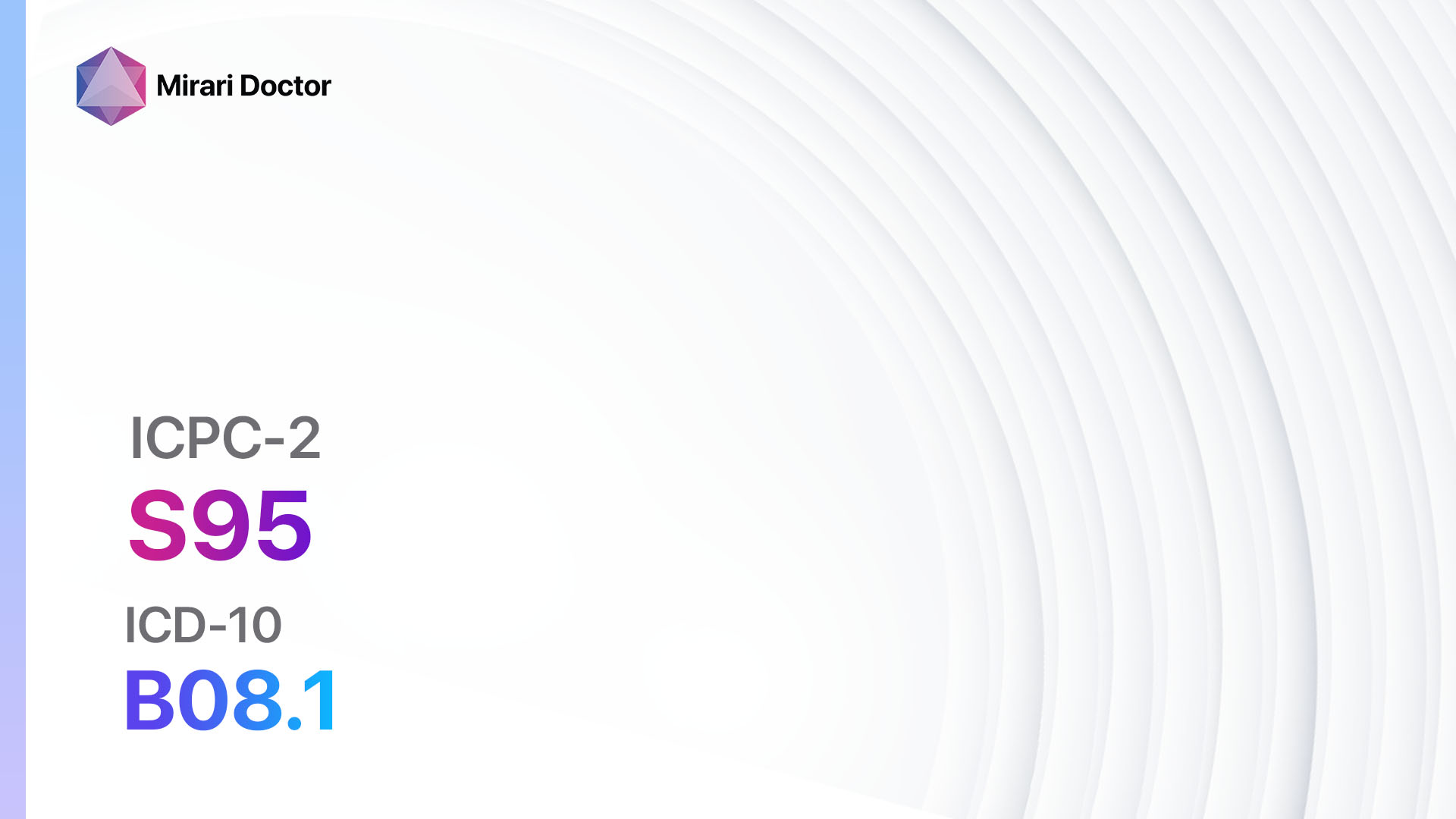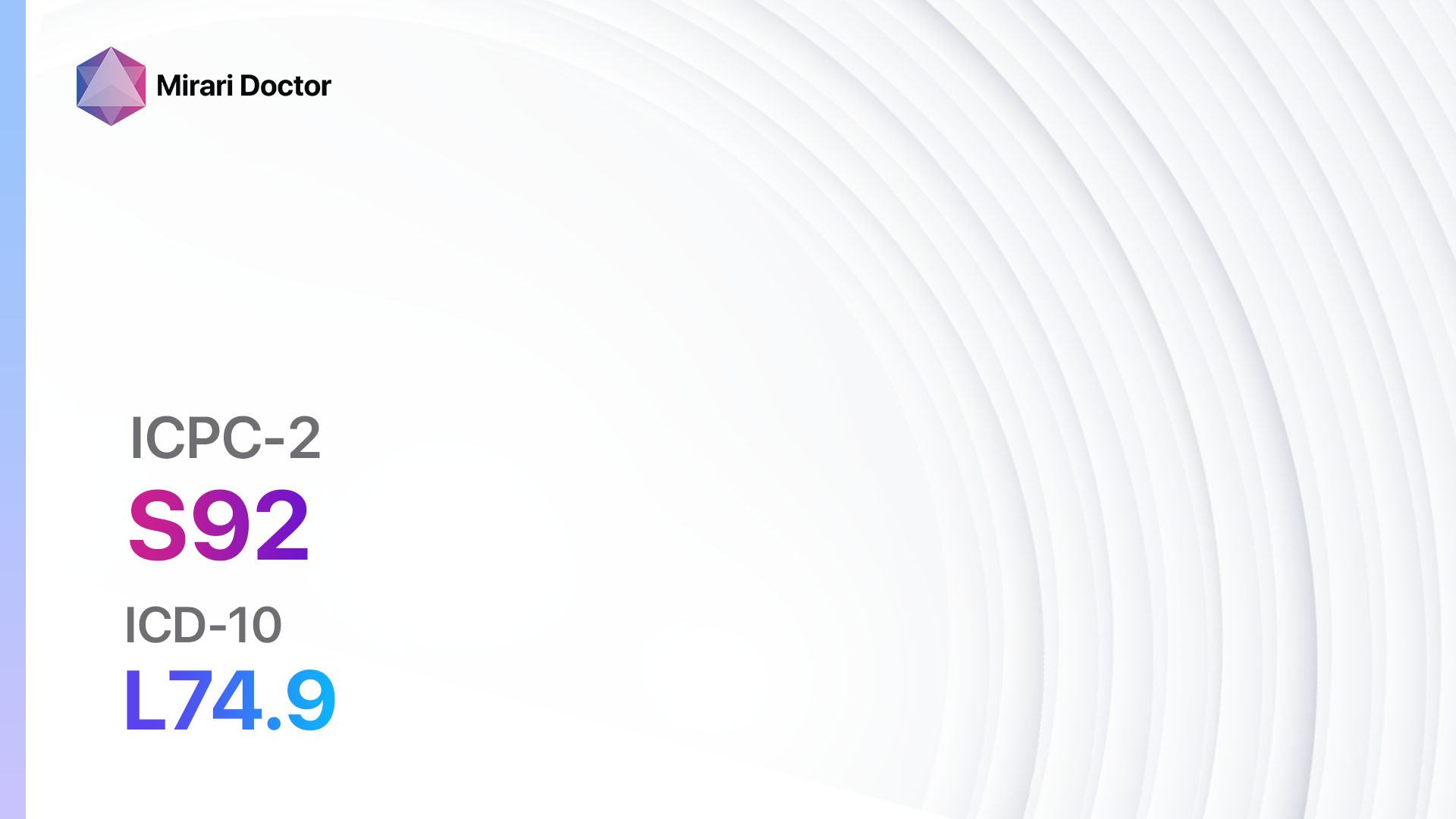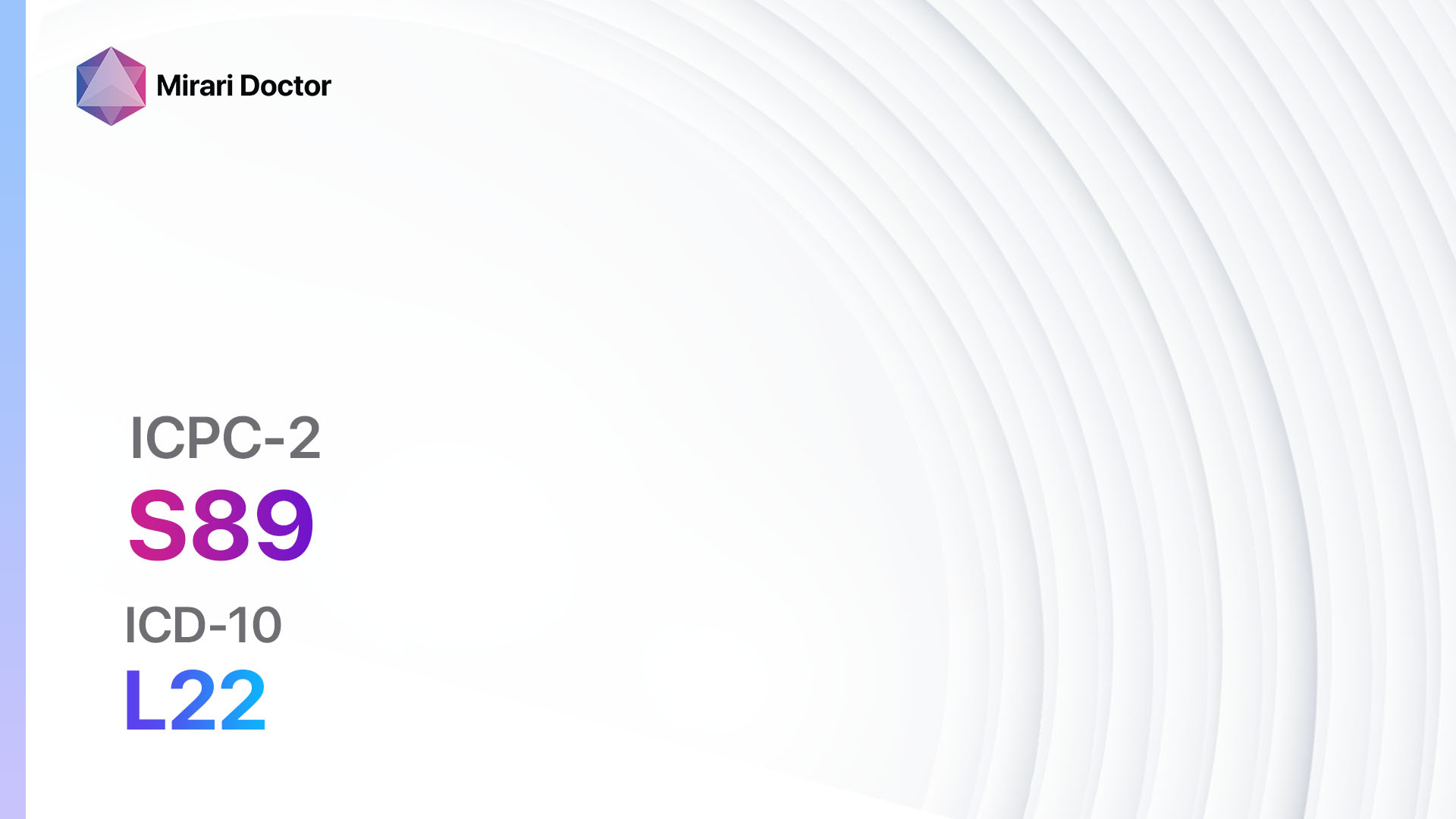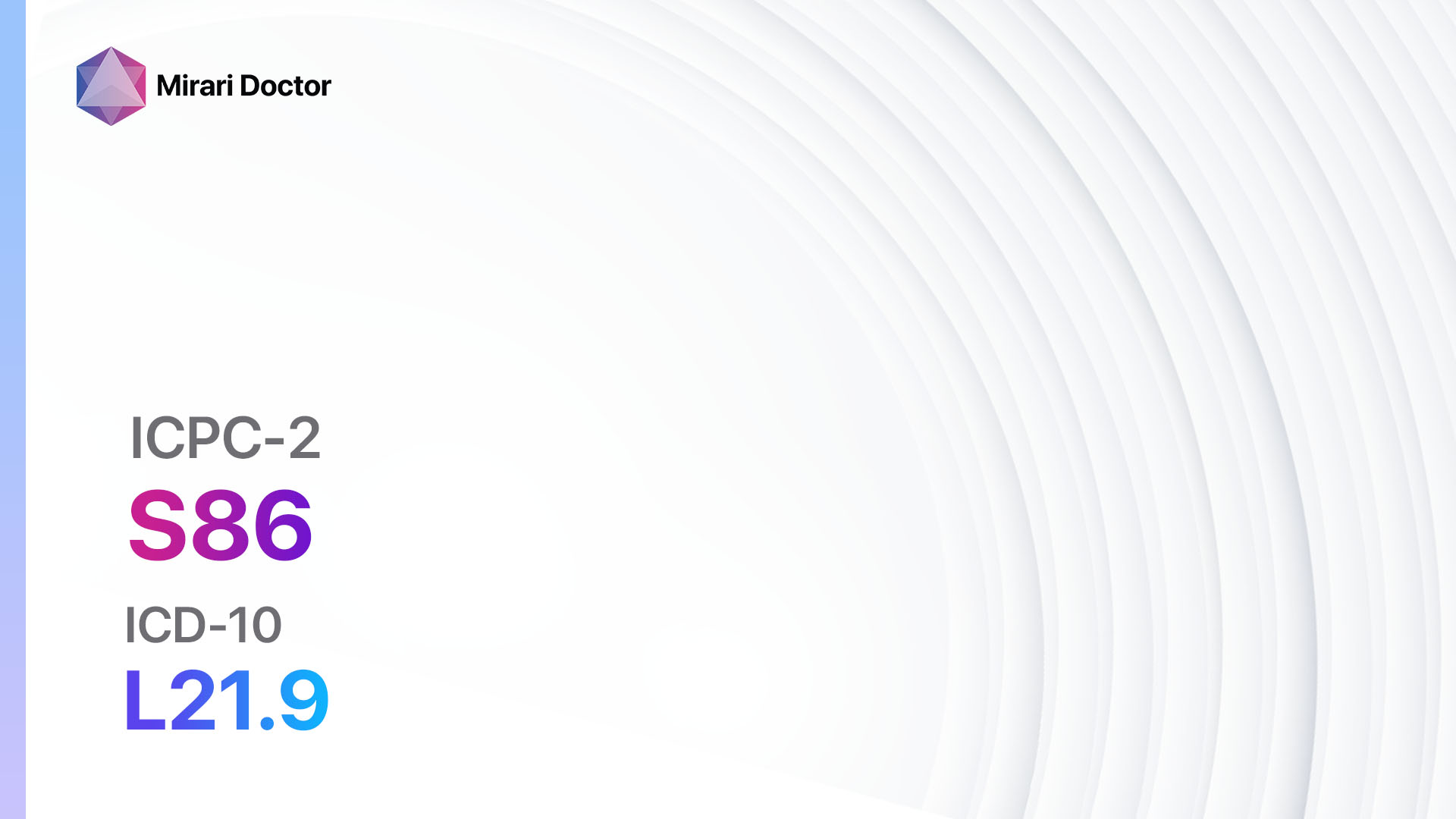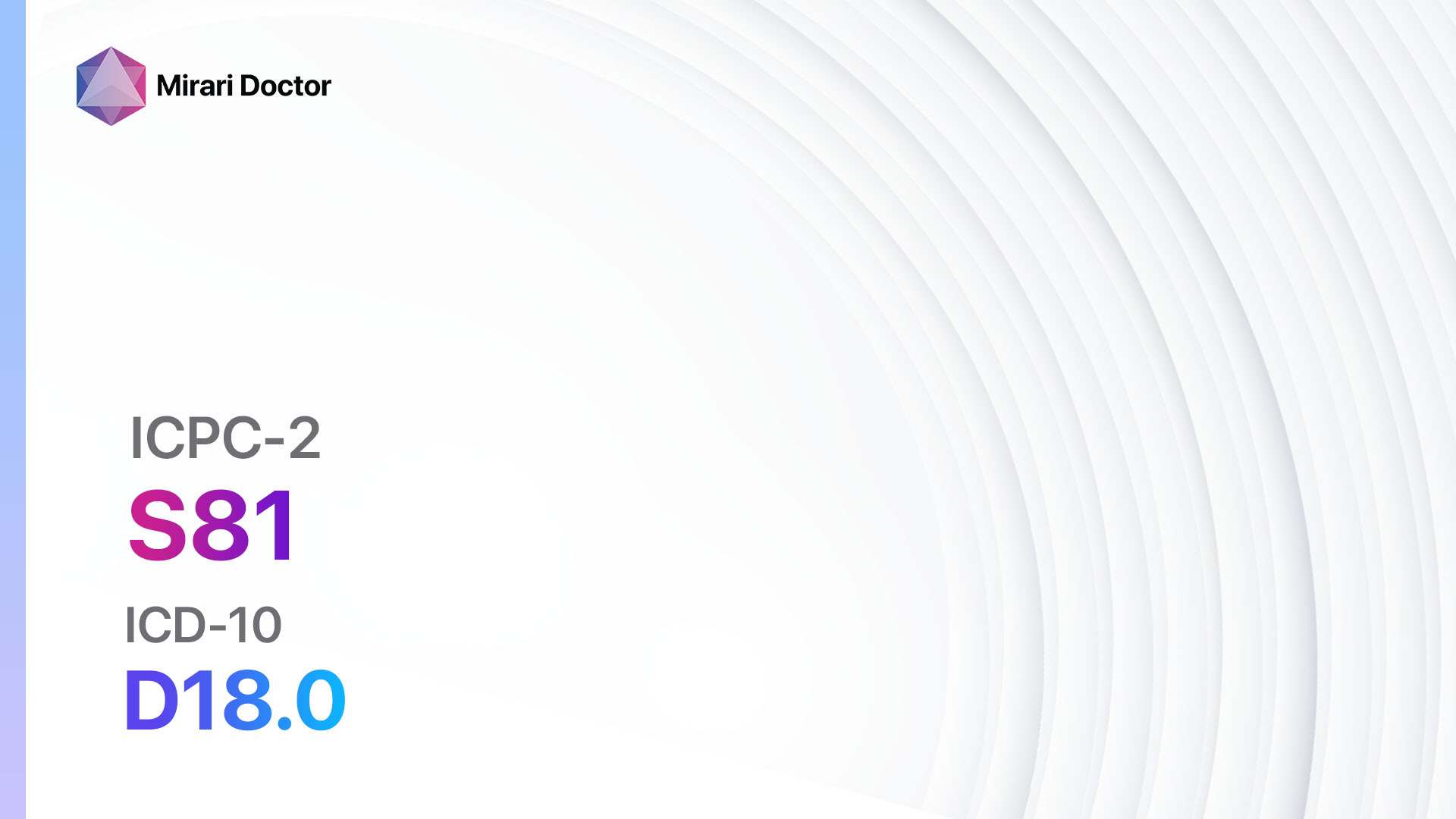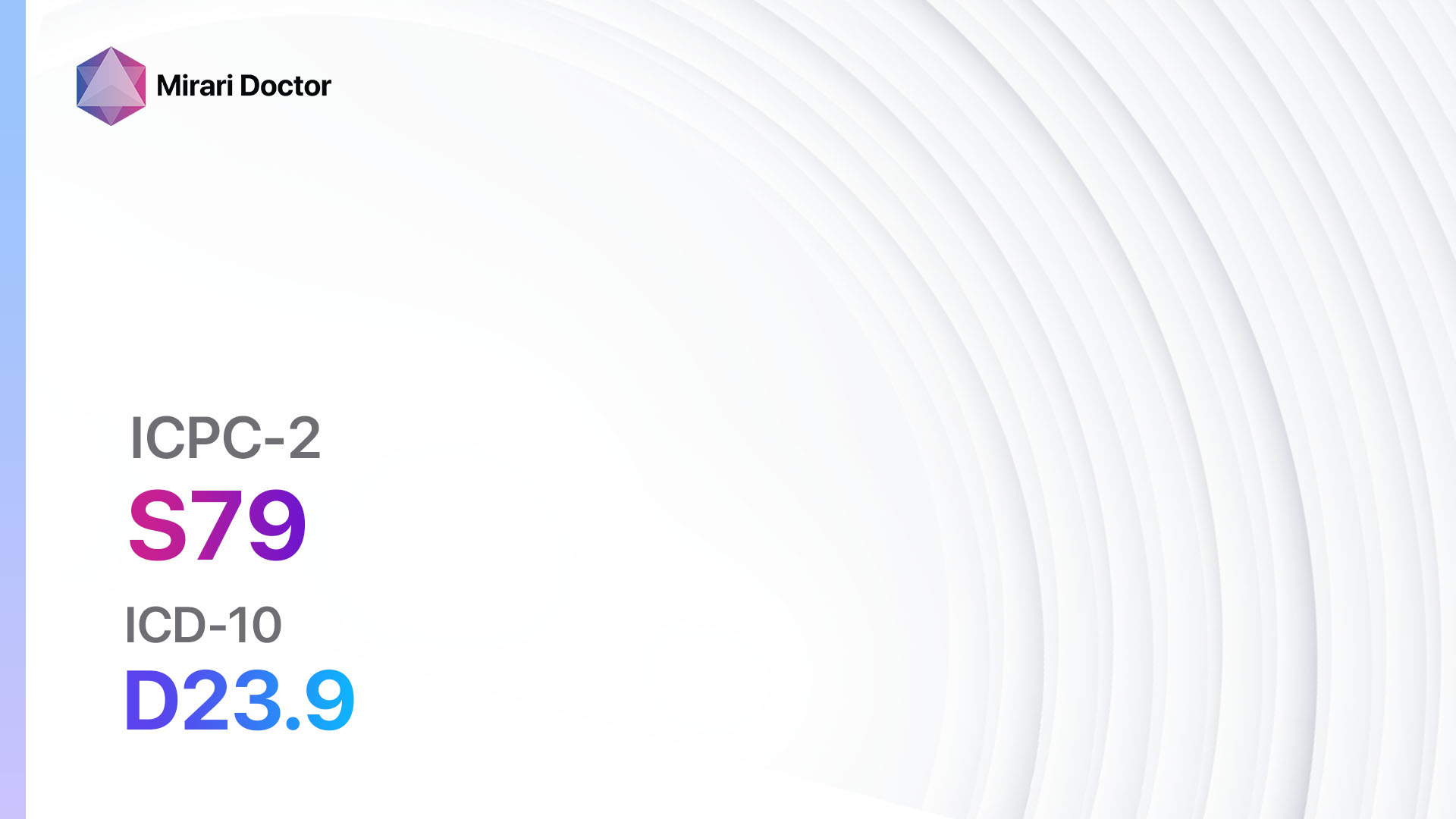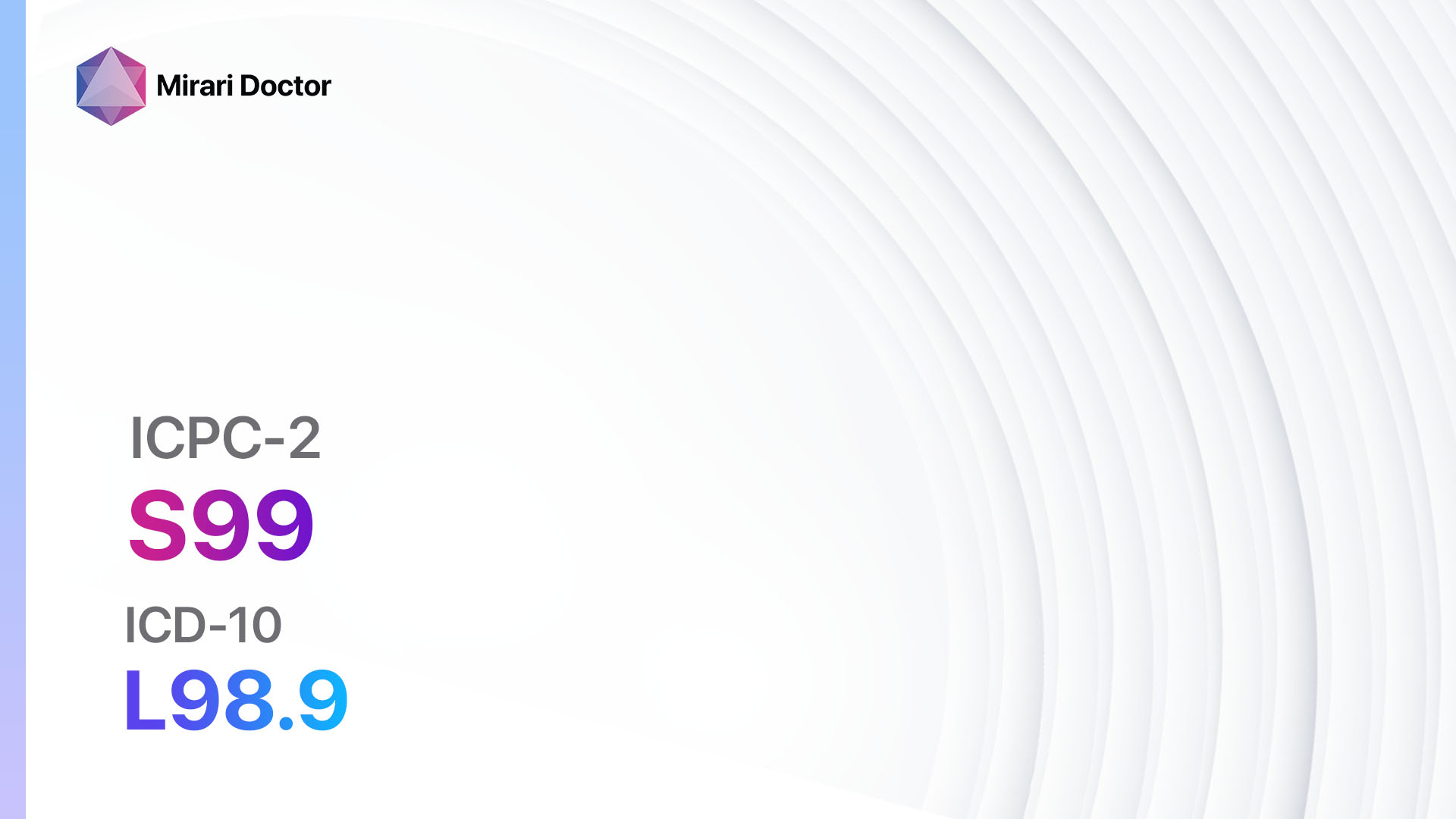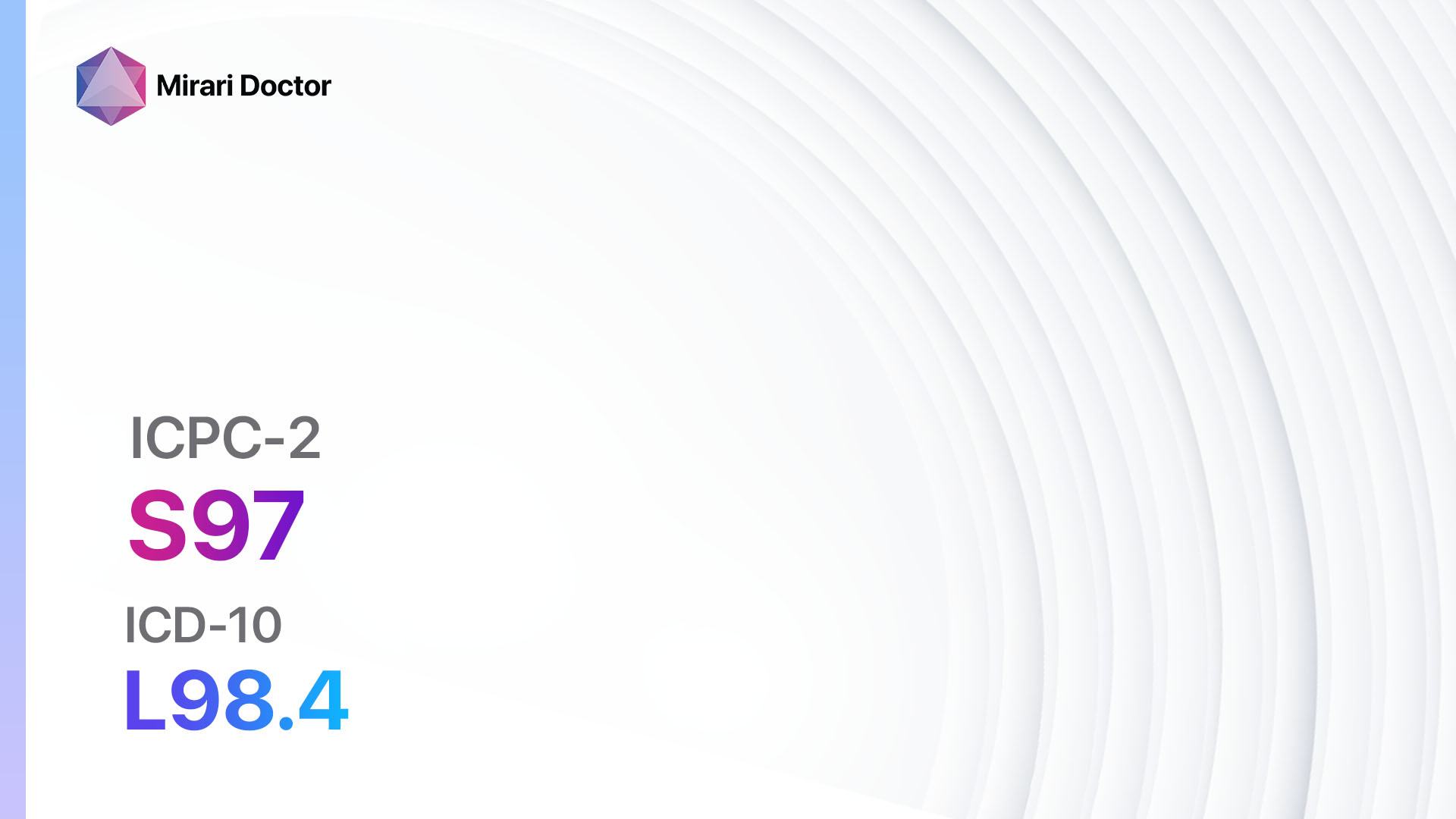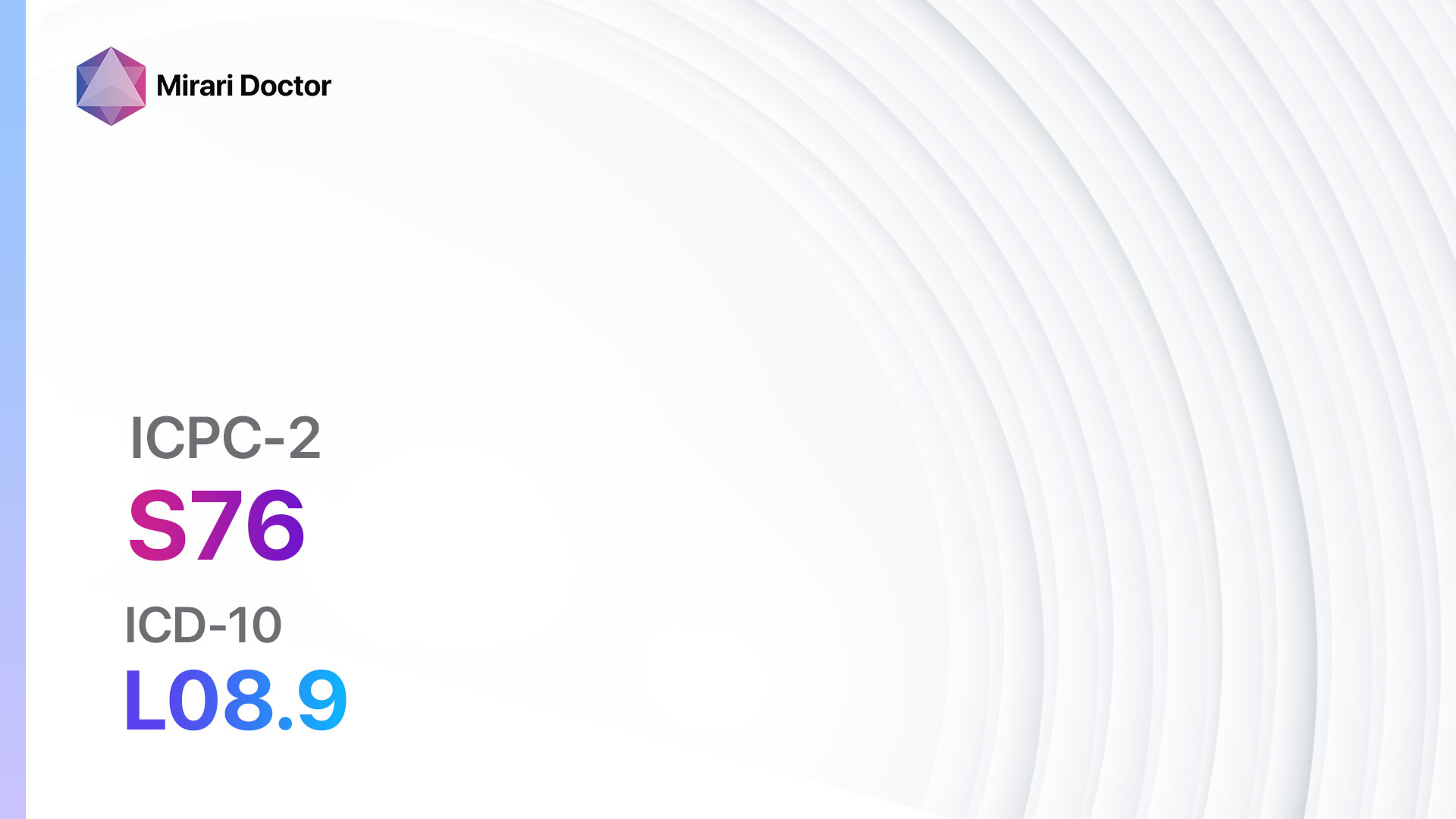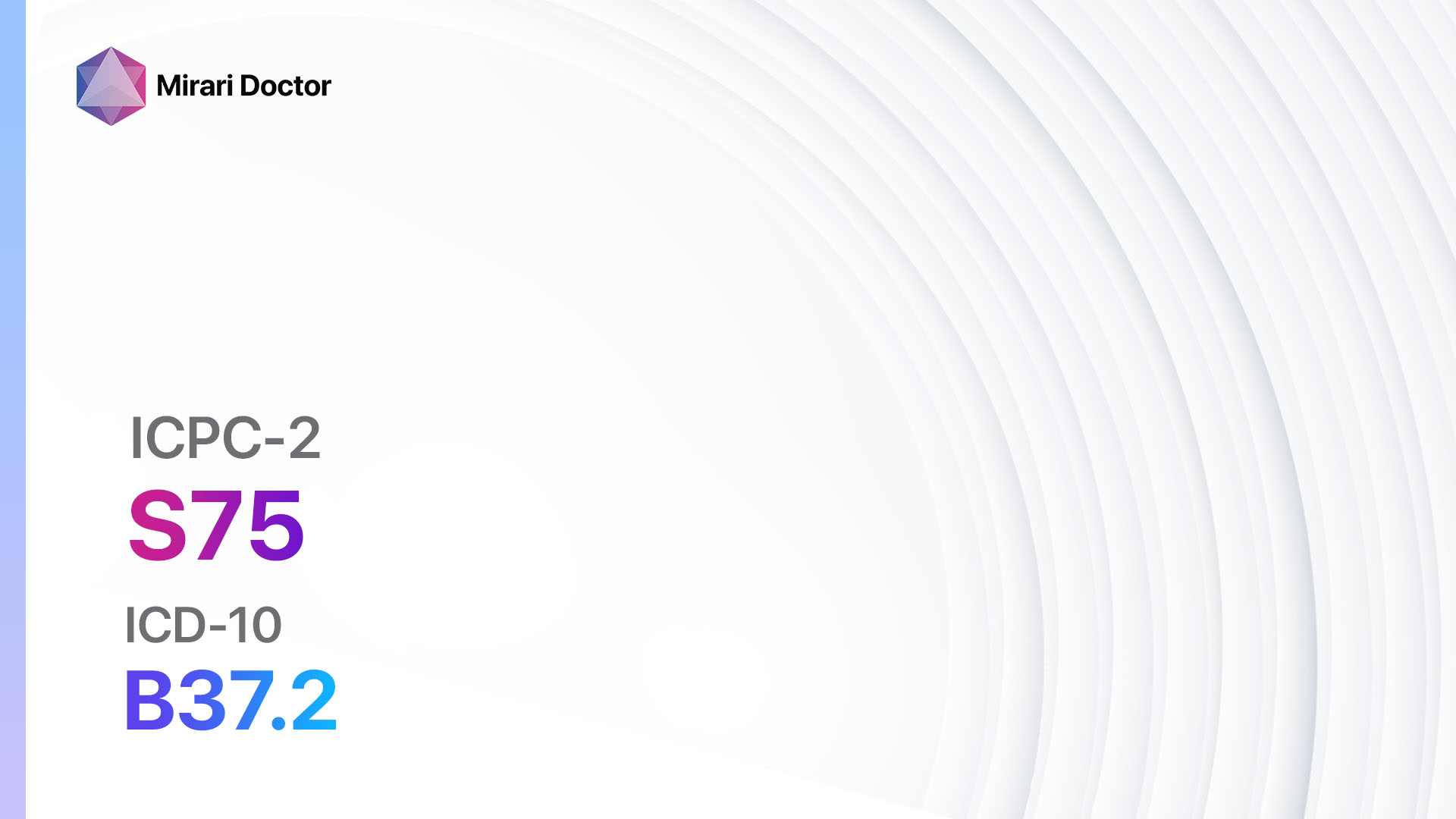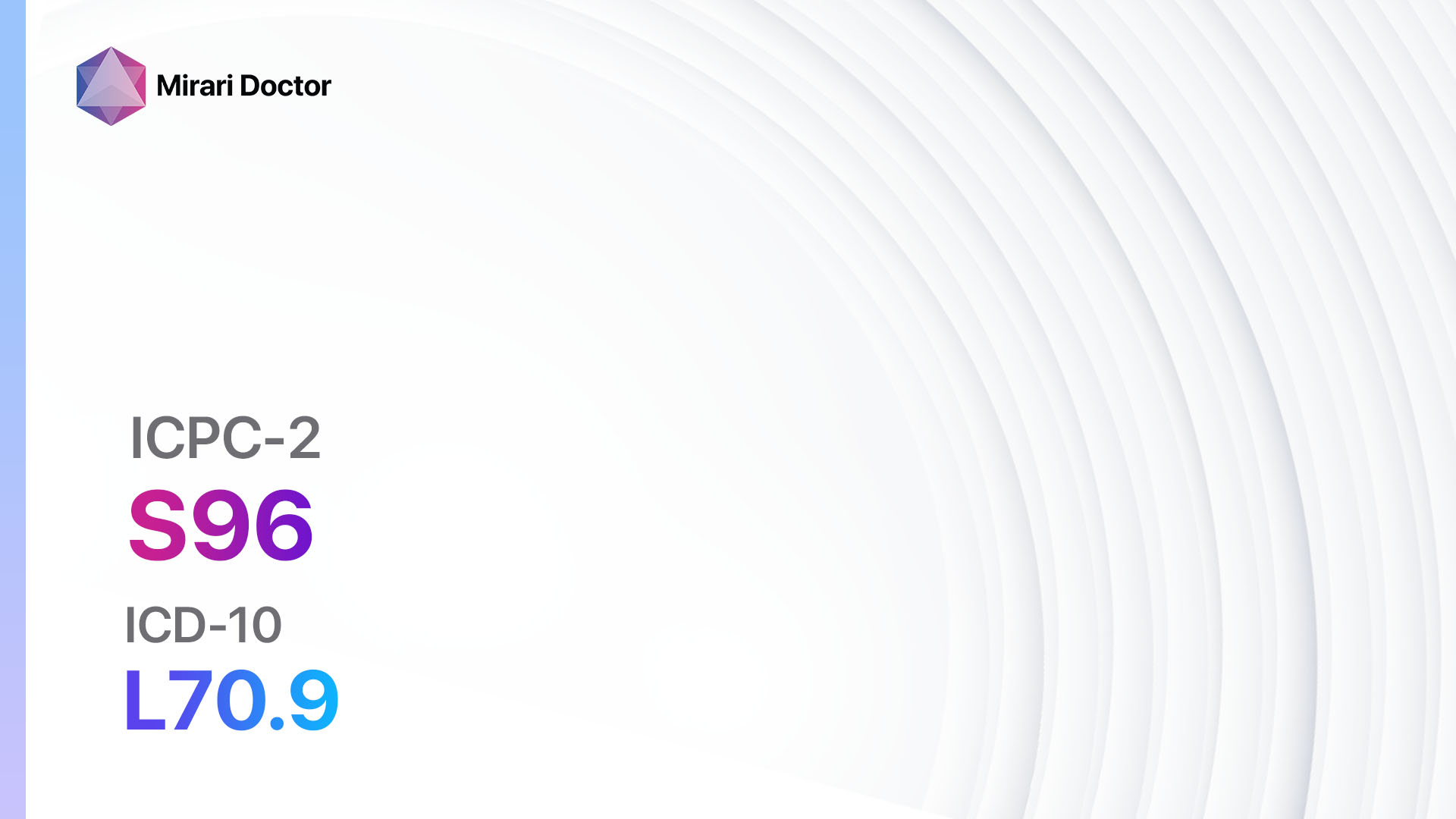
Introduction
Acne is a common skin condition that affects millions of people worldwide. It is characterized by the presence of pimples, blackheads, and whiteheads on the face, chest, and back.[1] Acne can have a significant impact on a person’s self-esteem and quality of life.[2] The aim of this guide is to provide healthcare professionals with a comprehensive approach to diagnosing and managing acne.
Codes
Symptoms
- Pimples: Small red bumps on the skin that may be filled with pus.[3]
- Blackheads: Small, dark spots on the skin caused by clogged hair follicles.[4]
- Whiteheads: Similar to blackheads, but covered by a thin layer of skin.[5]
Causes
- Excess oil production: The sebaceous glands in the skin produce too much oil, leading to clogged pores.[6]
- Bacteria: Propionibacterium acnes, a type of bacteria, can multiply in clogged pores and cause inflammation.[7]
- Hormonal changes: Fluctuations in hormone levels, particularly during puberty, can contribute to the development of acne.[8]
Diagnostic Steps
Medical History
- Gather information about the patient’s age, gender, and medical history.
- Ask about any previous treatments for acne and their effectiveness.
- Inquire about any family history of acne or other skin conditions.
- Assess the patient’s lifestyle factors, such as diet, stress levels, and skincare routine.[9]
Physical Examination
- Examine the patient’s skin for the presence of pimples, blackheads, and whiteheads.
- Assess the severity of the acne and any associated inflammation.
- Check for any signs of scarring or pigmentation changes.
- Evaluate the distribution of the acne lesions on the face, chest, and back.[10]
Determine Severity
Acne can be classified into four categories based on severity:
- Mild: Few to several papules and pustules, with minimal inflammation.
- Moderate: Numerous papules, pustules, and occasional nodules, with moderate inflammation.
- Severe: Numerous papules, pustules, and nodules, with severe inflammation and scarring.
- Very severe: Extensive involvement with nodules, cysts, and scarring.
Laboratory Tests
- No specific laboratory tests are required for the diagnosis of acne.
- In some cases, blood tests may be ordered to rule out underlying hormonal imbalances or other medical conditions that may contribute to acne.
Diagnostic Imaging
- No diagnostic imaging is necessary for the diagnosis of acne.
Other Tests
- No other diagnostic tests are necessary for the diagnosis of acne.
Follow-up and Patient Education
- Schedule regular follow-up appointments to monitor the patient’s progress and adjust treatment as needed.
- Provide education on proper skincare routines, including gentle cleansing and the use of non-comedogenic products.
- Discuss the importance of avoiding picking or squeezing acne lesions to prevent scarring.
- Address any concerns or questions the patient may have about their condition or treatment.
Possible Interventions
Traditional Interventions
Medications:
Top 5 drugs for Acne:
- Benzoyl peroxide:
- Cost: $5-$20 for a tube or bottle.
- Contraindications: Hypersensitivity to benzoyl peroxide.
- Side effects: Dryness, redness, and peeling of the skin.
- Severe side effects: Allergic reactions.
- Drug interactions: None reported.
- Warning: May bleach hair and fabrics.
- Topical retinoids (e.g., tretinoin, adapalene):
- Cost: $20-$100 for a tube or bottle.
- Contraindications: Pregnancy, hypersensitivity to retinoids.
- Side effects: Dryness, redness, and peeling of the skin.
- Severe side effects: None reported.
- Drug interactions: None reported.
- Warning: May increase sensitivity to sunlight.
- Topical antibiotics (e.g., clindamycin, erythromycin):
- Cost: $10-$50 for a tube or bottle.
- Contraindications: Hypersensitivity to antibiotics.
- Side effects: Skin irritation, dryness.
- Severe side effects: None reported.
- Drug interactions: None reported.
- Warning: Prolonged use may lead to antibiotic resistance.
- Oral antibiotics (e.g., doxycycline, minocycline):
- Cost: $10-$50 for a month’s supply.
- Contraindications: Pregnancy, hypersensitivity to antibiotics.
- Side effects: Nausea, diarrhea, photosensitivity.
- Severe side effects: Rarely, severe allergic reactions.
- Drug interactions: None reported.
- Warning: Prolonged use may lead to antibiotic resistance.
- Oral contraceptives (for females) (e.g., ethinyl estradiol with norgestimate, ethinyl estradiol with drospirenone):
- Cost: $20-$50 for a month’s supply.
- Contraindications: Pregnancy, history of blood clots, certain types of cancer.
- Side effects: Nausea, breast tenderness, breakthrough bleeding.
- Severe side effects: Rarely, blood clots, stroke.
- Drug interactions: None reported.
- Warning: May not be suitable for all females, discuss with healthcare provider.
Alternative Drugs:
- Azelaic acid: Topical medication that helps to unclog pores and reduce inflammation. Cost: $20-$50 for a tube or bottle.
- Spironolactone: Oral medication that can be used in females with hormonal acne. Cost: $10-$50 for a month’s supply.
- Isotretinoin: Oral medication reserved for severe acne that does not respond to other treatments. Cost: $100-$500 for a month’s supply.
Surgical Procedures:
- No surgical procedures are necessary for the treatment of acne.
Alternative Interventions
- Tea tree oil: Natural oil with antimicrobial properties. Cost: $5-$15 for a bottle.
- Aloe vera: Soothing gel that can help reduce inflammation. Cost: $5-$20 for a bottle.
- Green tea extract: Antioxidant-rich extract that may help reduce acne. Cost: $10-$30 for a bottle.
- Zinc supplements: Some studies suggest that zinc may help reduce acne. Cost: $5-$20 for a bottle.
- Probiotics: Some evidence suggests that certain strains of probiotics may improve acne. Cost: $10-$30 for a bottle.
Lifestyle Interventions
- Proper skincare routine: Gentle cleansing twice a day and avoiding harsh scrubbing or abrasive products. Cost: $10-$30 for skincare products.
- Healthy diet: Encourage a diet rich in fruits, vegetables, and whole grains, and low in processed foods and sugar. Cost: Varies depending on food choices.
- Stress management: Encourage stress-reducing activities such as exercise, meditation, or yoga. Cost: Varies depending on chosen activities.
- Regular exercise: Physical activity can help improve circulation and reduce stress. Cost: Varies depending on chosen activities.
- Avoiding triggers: Identify and avoid any specific triggers that may worsen acne, such as certain foods or cosmetics. Cost: Varies depending on individual triggers.
It is important to note that the cost ranges provided are approximate and may vary depending on the location and availability of the interventions.
Mirari Cold Plasma Alternative Intervention
Understanding Mirari Cold Plasma
- Safe and Non-Invasive Treatment: Mirari Cold Plasma is a safe and non-invasive treatment option for various skin conditions. It does not require incisions, minimizing the risk of scarring, bleeding, or tissue damage.
- Efficient Extraction of Foreign Bodies: Mirari Cold Plasma facilitates the removal of foreign bodies from the skin by degrading and dissociating organic matter, allowing easier access and extraction.
- Pain Reduction and Comfort: Mirari Cold Plasma has a local analgesic effect, providing pain relief during the treatment, making it more comfortable for the patient.
- Reduced Risk of Infection: Mirari Cold Plasma has antimicrobial properties, effectively killing bacteria and reducing the risk of infection.
- Accelerated Healing and Minimal Scarring: Mirari Cold Plasma stimulates wound healing and tissue regeneration, reducing healing time and minimizing the formation of scars.
Mirari Cold Plasma Prescription
Video instructions for using Mirari Cold Plasma Device – S96 Acne (ICD-10:L70.9)
| Mild | Moderate | Severe |
| Mode setting: 1 (Infection) Location: 0 (Localized) Morning: 15 minutes, Evening: 15 minutes |
Mode setting: 1 (Infection) Location: 0 (Localized) Morning: 30 minutes, Lunch: 30 minutes, Evening: 30 minutes |
Mode setting: 1 (Infection) Location: 0 (Localized) Morning: 30 minutes, Lunch: 30 minutes, Evening: 30 minutes |
| Mode setting: 2 (Wound Healing) Location: 0 (Localized) Morning: 15 minutes, Evening: 15 minutes |
Mode setting: 2 (Wound Healing) Location: 0 (Localized) Morning: 30 minutes, Lunch: 30 minutes, Evening: 30 minutes |
Mode setting: 2 (Wound Healing) Location: 0 (Localized) Morning: 30 minutes, Lunch: 30 minutes, Evening: 30 minutes |
| Mode setting: 10 (Dermatitis/Fungus) Location: 0 (Localized) Morning: 15 minutes, Evening: 15 minutes |
Mode setting: 10 (Dermatitis/Fungus) Location: 0 (Localized) Morning: 30 minutes, Lunch: 30 minutes, Evening: 30 minutes |
Mode setting: 10 (Dermatitis/Fungus) Location: 0 (Localized) Morning: 30 minutes, Lunch: 30 minutes, Evening: 30 minutes |
| Total Morning: 45 minutes approx. $7.50 USD, Evening: 45 minutes approx. $7.50 USD |
Total Morning: 90 minutes approx. $15 USD, Lunch: 90 minutes approx. $15 USD, Evening: 90 minutes approx. $15 USD |
Total Morning: 90 minutes approx. $15 USD, Lunch: 90 minutes approx. $15 USD, Evening: 90 minutes approx. $15 USD |
| Usual treatment for 7-60 days approx. $105 USD – $900 USD | Usual treatment for 6-8 weeks approx. $1,890 USD – $2,520 USD |
Usual treatment for 3-6 months approx. $4,050 USD – $8,100 USD
|
 |
|
Use the Mirari Cold Plasma device to treat Acne effectively.
WARNING: MIRARI COLD PLASMA IS DESIGNED FOR THE HUMAN BODY WITHOUT ANY ARTIFICIAL OR THIRD PARTY PRODUCTS. USE OF OTHER PRODUCTS IN COMBINATION WITH MIRARI COLD PLASMA MAY CAUSE UNPREDICTABLE EFFECTS, HARM OR INJURY. PLEASE CONSULT A MEDICAL PROFESSIONAL BEFORE COMBINING ANY OTHER PRODUCTS WITH USE OF MIRARI.
Step 1: Cleanse the Skin
- Start by cleaning the affected area of the skin with a gentle cleanser or mild soap and water. Gently pat the area dry with a clean towel.
Step 2: Prepare the Mirari Cold Plasma device
- Ensure that the Mirari Cold Plasma device is fully charged or has fresh batteries as per the manufacturer’s instructions. Make sure the device is clean and in good working condition.
- Switch on the Mirari device using the power button or by following the specific instructions provided with the device.
- Some Mirari devices may have adjustable settings for intensity or treatment duration. Follow the manufacturer’s instructions to select the appropriate settings based on your needs and the recommended guidelines.
Step 3: Apply the Device
- Place the Mirari device in direct contact with the affected area of the skin. Gently glide or hold the device over the skin surface, ensuring even coverage of the area experiencing.
- Slowly move the Mirari device in a circular motion or follow a specific pattern as indicated in the user manual. This helps ensure thorough treatment coverage.
Step 4: Monitor and Assess:
- Keep track of your progress and evaluate the effectiveness of the Mirari device in managing your Acne. If you have any concerns or notice any adverse reactions, consult with your health care professional.
Note
This guide is for informational purposes only and should not replace the advice of a medical professional. Always consult with your healthcare provider or a qualified medical professional for personal advice, diagnosis, or treatment. Do not solely rely on the information presented here for decisions about your health. Use of this information is at your own risk. The authors of this guide, nor any associated entities or platforms, are not responsible for any potential adverse effects or outcomes based on the content.
Mirari Cold Plasma System Disclaimer
- Purpose: The Mirari Cold Plasma System is a Class 2 medical device designed for use by trained healthcare professionals. It is registered for use in Thailand and Vietnam. It is not intended for use outside of these locations.
- Informational Use: The content and information provided with the device are for educational and informational purposes only. They are not a substitute for professional medical advice or care.
- Variable Outcomes: While the device is approved for specific uses, individual outcomes can differ. We do not assert or guarantee specific medical outcomes.
- Consultation: Prior to utilizing the device or making decisions based on its content, it is essential to consult with a Certified Mirari Tele-Therapist and your medical healthcare provider regarding specific protocols.
- Liability: By using this device, users are acknowledging and accepting all potential risks. Neither the manufacturer nor the distributor will be held accountable for any adverse reactions, injuries, or damages stemming from its use.
- Geographical Availability: This device has received approval for designated purposes by the Thai and Vietnam FDA. As of now, outside of Thailand and Vietnam, the Mirari Cold Plasma System is not available for purchase or use.
References
- Zaenglein AL, Pathy AL, Schlosser BJ, et al. Guidelines of care for the management of acne vulgaris. J Am Acad Dermatol. 2016;74(5):945-973.e33.
- Tan JKL, Bhate K. A global perspective on the epidemiology of acne. Br J Dermatol. 2015;172 Suppl 1:3-12.
- Gollnick HP, Zouboulis CC. Not all acne is acne vulgaris. Dtsch Arztebl Int. 2014;111(17):301-312.
- Oge’ LK, Broussard A, Marshall MD. Acne Vulgaris: Diagnosis and Treatment. Am Fam Physician. 2019;100(8):475-484.
- Thiboutot D, Gollnick H, Bettoli V, et al. New insights into the management of acne: an update from the Global Alliance to Improve Outcomes in Acne group. J Am Acad Dermatol. 2009;60(5 Suppl):S1-S50.
- Zouboulis CC, Jourdan E, Picardo M. Acne is an inflammatory disease and alterations of sebum composition initiate acne lesions. J Eur Acad Dermatol Venereol. 2014;28(5):527-532.
- Dreno B, Pécastaings S, Corvec S, Veraldi S, Khammari A, Roques C. Cutibacterium acnes (Propionibacterium acnes) and acne vulgaris: a brief look at the latest updates. J Eur Acad Dermatol Venereol. 2018;32 Suppl 2:5-14.
- Elsaie ML. Hormonal treatment of acne vulgaris: an update. Clin Cosmet Investig Dermatol. 2016;9:241-248.
- Dréno B. What is new in the pathophysiology of acne, an overview. J Eur Acad Dermatol Venereol. 2017;31 Suppl 5:8-12.
- Nast A, Dréno B, Bettoli V, et al. European evidence-based (S3) guideline for the treatment of acne – update 2016 – short version. J Eur Acad Dermatol Venereol. 2016;30(8):1261-1268.
Related articles
Made in USA



